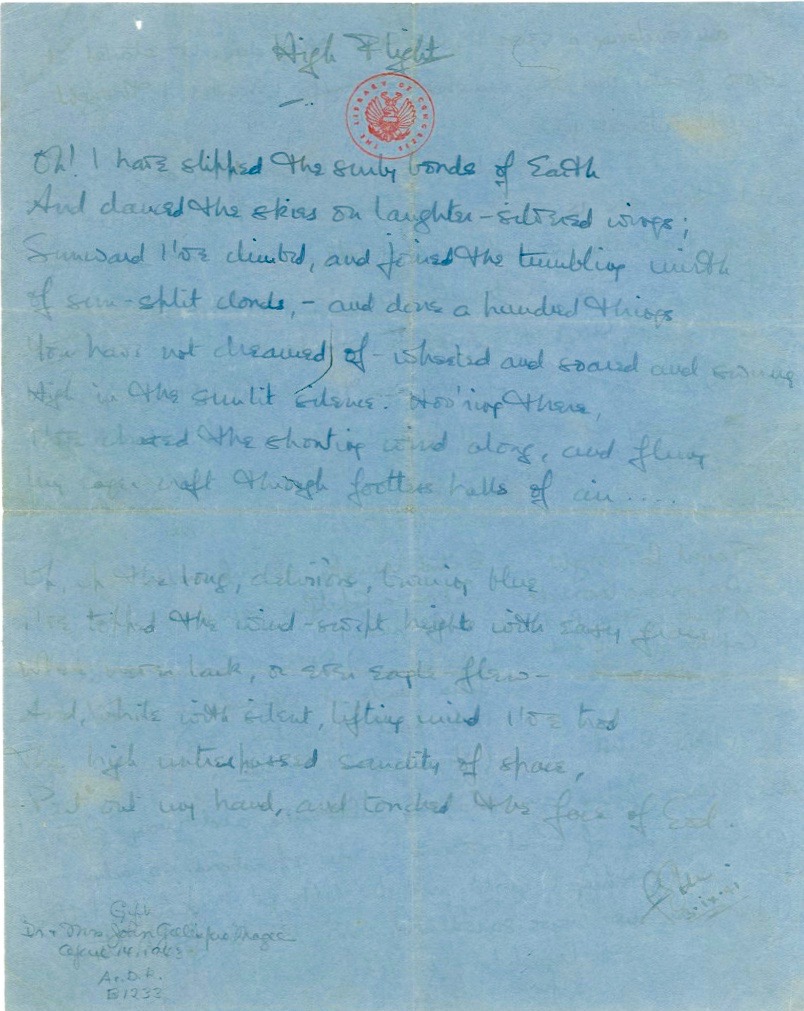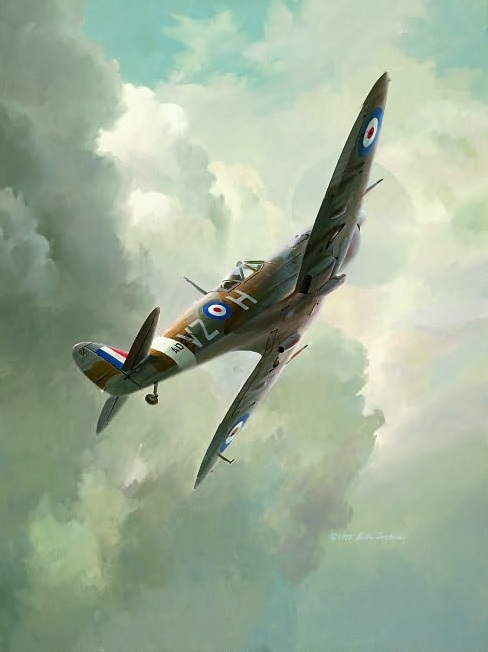
18 August 1941: Many sources give this as the date on which Pilot Officer John Gillespie, Jr., Royal Canadian Air Force, wrote—or began writing—his famous poem, “High Flight.”
Oh! I have slipped the surly bonds of Earth
And danced the skies on laughter-silvered wings;
Sunward I’ve climbed, and joined the tumbling mirth
of sun-split clouds,—and done a hundred things
You have not dreamed of—wheeled and soared and swung
High in the sunlit silence. Hov’ring there,
I’ve chased the shouting wind along, and flung
My eager craft through footless halls of air…
Up, up the long, delirious, burning blue
I’ve topped the wind-swept heights with easy grace
Where never lark nor ever eagle flew—
And, while with silent lifting mind I’ve trod
The high untrespassed sanctity of space,
Put out my hand, and touched the face of God.
Magee mailed the poem to his parents on 3 September 1941.
John Magee was an American serving as a fighter pilot in England before the United States entered World War II. He was killed when his Supermarine Spitfire collided with another airplane in clouds over the village of Roxholm, Lincolnshire, England.
He was only 19 years old.

¹ Update: Keith Ferris Art, Inc., shows this painting as SOLD.
© 2021, Bryan R. Swopes
Yes with extreme prejudice toward fear of experience I dream overhead.
August 18th is known as the “Hardest Day” during the Battle of Britain.
The Luftwaffe set out to destroy Fighter Command Airfields. They flew 850 sorties with 2200 aircrew and the RAF 927 sorties with 600 aircrew. Target airfields were Kenley, Biggin Hill, Gosport, Ford, Thorne Island Hornchurch, North Weald along with the radar station at Poling.
Re-arming and refuelling the fighter aircraft was carried out as quickly as possible as the pilots would have to be ready to fly several sorties.
The day ended with the Germans losing 69 aircraft and the RAF 68, 31 of these was during air combat.